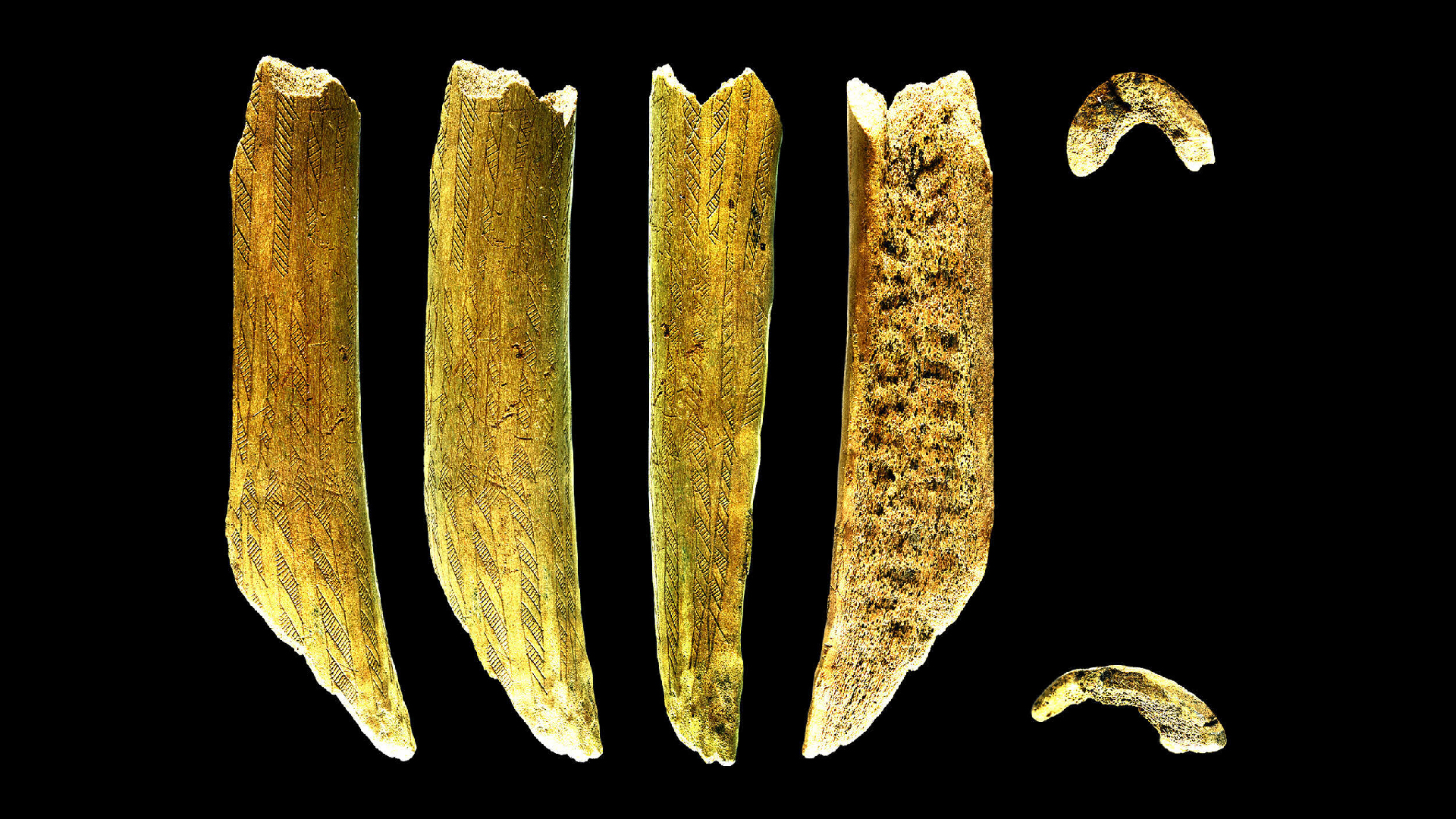An exquisitely decorated 7,500-year-old antler from central Sweden was first used as a battle ax and later probably as a fishing harpoon during the Stone Age, a new study suggests.
Researchers found the antler eight years ago, but had not been able to study it with new technology until now.
“It was probably handled as an ax,” study co-author Lars Larsson, a professor of archaeology at Lund University in Sweden, told Live Science. “There are several examples in present-day Denmark of antler axes with severe damage after heavy use.” The damage suggests the axes were used in battle, he said.
The antler was originally discovered atop a stone platform in a river running from Lake Vättern to the Baltic Sea. It was deposited alongside several other items, including a bone needle, fishing barbs, stone ax blades, engraved animal bones and 20 pieces of human skull. The small cache was discovered at the archaeological site of Strandvägen, a settlement from the Mesolithic, or Middle Stone Age.
“The Strandvägen site is one of the largest Mesolithic sites in Sweden, and unique in the region as preservational circumstances generally are poor in this region,” Sara Gummesson, an archaeologist at Stockholm University in Sweden who was not involved in the study, told Live Science.
Related: This Stone Age man’s jawless skull was found on a spike. Here’s what he looked like.
Because of the highly acidic soils in Sweden, organic materials typically degrade, leaving no trace. Strandvägen is exceptional in that it provides one of the few areas where organic material like antlers has been preserved. This preservation is in part because many of the organic materials were found in water, but also because the soils are in a bedrock that is less acidic, Gummesson said.
Past radiocarbon dating of bones and artifacts at Strandvägen has shown that the region was inhabited from 5,800 to 5,000 B.C. The settlement is across the river from another important site, called Kanaljorden, which was occupied around the same time and has revealed unique finds such as heads impaled on wooden stakes.
“The settlement is located next to the only outlet for Lake Vättern, Sweden’s second largest lake,” Larsson said. Groups of hunter-fisher-gatherers thrived around this outlet of the lake, using nearby forests for hunting and the lake for fishing, he said.
Prior excavations at Strandvägen revealed graves, houses, workshops and numerous bone and antler tools, but this antler is the “best-decorated” of the bone and antler objects, Larsson said.
The antler, which comes from a red deer (Cervus elaphus), measures around 4.2 inches (10.7 centimeters) long and has a width of 0.8 inches (2.1 cm). Radiocarbon dating of tar found within the antler’s grooves suggests it is around 7,500 years old.
From ax to harpoon
To better understand the antler and its history, Larsson and his co-author, Fredrik Molin, an archaeologist at Sweden’s National Historical Museum, studied it with a digital microscope.
Their analysis revealed that the antler was initially filed to produce even surfaces before it was carved with a flint tool to create elaborate hatch-like patterns. Tar was then rubbed into the etched grooves to accentuate the hatchlike designs.
It appears that multiple people worked on the antler, with some of the patterns appearing less precise and having been whittled down to make way for new designs. Some of the craftsmen appear to have been more skilled than others.
Antlers served as handles that were attached to sharpened bones or stone blades, and they showed characteristic breakage when overused. This antler has that breakage pattern, suggesting that the decorated antler was likely used as an ax in battle, Larsson said.
Further fragmentation on the antler led Larsson and Molin to believe the ax may have been repurposed into a harpoon, which is another common artifact found across the site.

Nowadays, “if an item gets broken, many of us buy a new one,” Gummesson said. “This was not the case until very recently.”
The final burial of the antler alongside other valued goods and human remains suggests the antler was ultimately buried as a sacrifice.
“An object may actually have changed use, been given new values, repaired and treasured in many different ways throughout its ‘life’, which also may have extended beyond one person’s lifetime,” says Gummesson.














